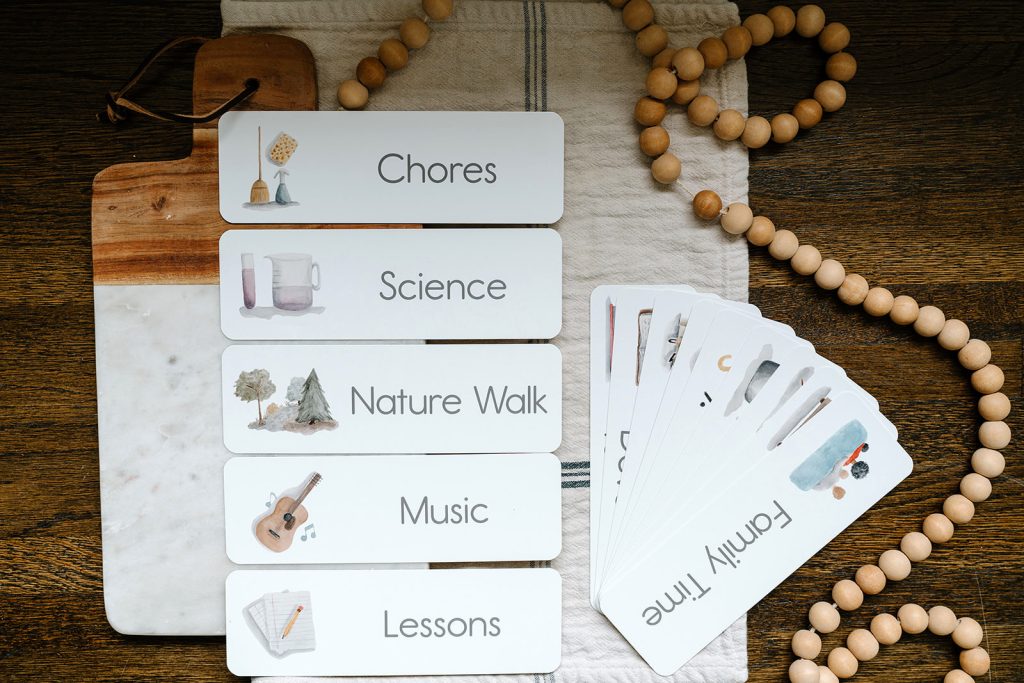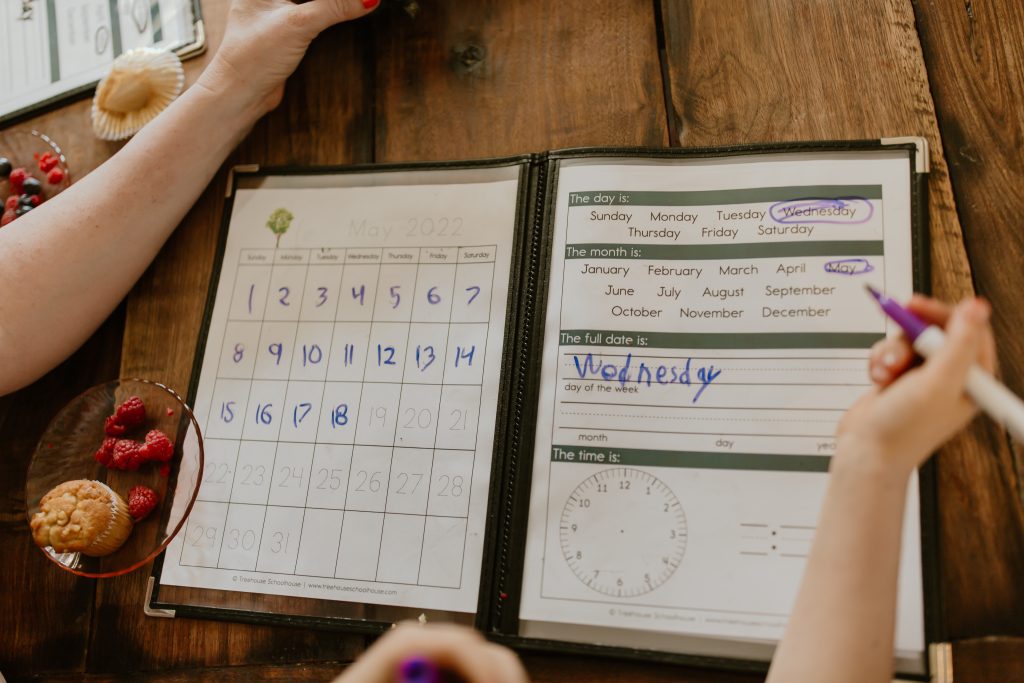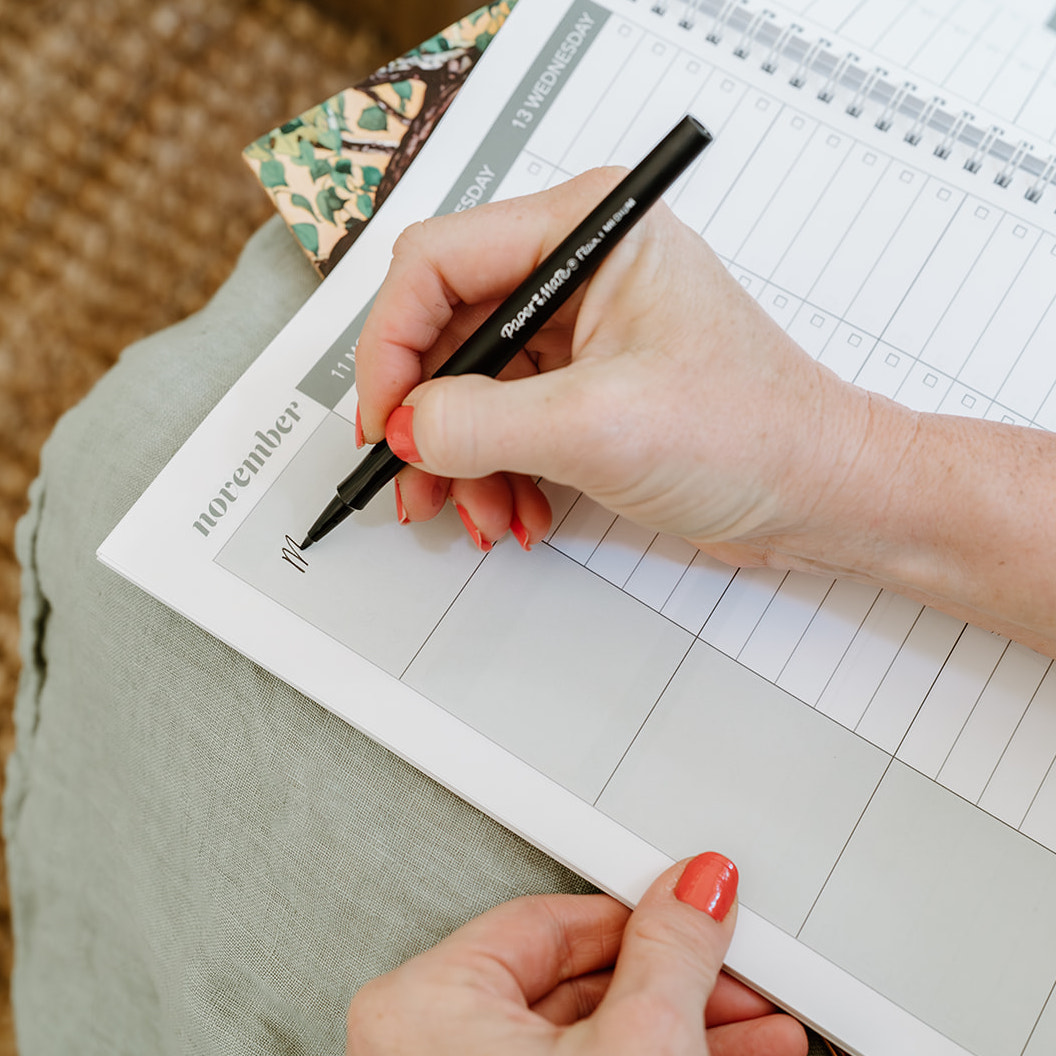Below I have a comprehensive list of items I find the most useful to have on hand year-round for homeschooling preschool-aged children, ages 2.5 to 5. These are items to have on hand if you are starting Treehouse Story School: Preschool, or if you are just engaging in learning with little ones.
If you are just starting out, don’t let this list overwhelm you – you don’t need to buy it all at once. When I first began homeschooling, I made an Amazon wishlist and added everything to my list. When a lesson popped up that required an item, I would buy it until eventually I was fully stocked. You can view supplies by subject here, or see everything in my Amazon storefront.
In this blog post:
- Homeschool preschool lesson planning supplies
- Homeschool preschool storytime essentials
- Homeschool preschool alphabet supplies
- Essential arts & crafts supplies for preschoolers
- Sensory learning supplies for homeschool preschool
- Explore more Treehouse Schoolhouse preschool resources
Homeschool preschool lesson planning supplies

These are items that are helpful to have for preparing for Treehouse Story School: Preschool or for any hands-on preschool curriculum.
- Homeschool planner – I designed this planner for balance lesson plans for multiple children. Schedule in your daily activities and field trips!
- 3-ring binder and page protectors. If you are prepping Treehouse Story School: Preschool, this is the easiest way to store the Storytelling Pieces for each week.
- Laminator and laminating sheets for laminating the Storytelling Pieces or anything else you use often in your homeschool.
- 3-hole punch
- Color printer
- Paper cutter
- White cardstock and printer paper
- Wooden trays
- Storage baskets for Storytelling Pieces, Beginning Sound Box items, or the weekly Book Basket.
Homeschool preschool storytime essentials

If you plan to spend time reading books together with your child, here are some things you may love to have in your home or homeschool space.
- Picture books to read together. Here are my favorite living books titles to have to read to children.
- Soft, cozy blanket
- Storage basket for rotating Book Basket picks
- Floor mat – I like to use one per child
- Teapot for read-aloud tea parties
- Dolls, blocks, and little toys for storytime narration
Homeschool preschool alphabet supplies

- Felt letters and moveable alphabet letters
- Uppercase sandpaper letters
- Letter stamps and ink pads
- Wonder of Nature Alphabet Sheets
- Wonder of Nature Print Alphabet Cards
- Salt for salt trays and letter writing
- Small slates and chalk for letter writing practice
- Dry erase pouches and fine-point dry erase markers
Essential arts & crafts supplies for preschoolers

Each week of Treehouse Story School: Preschool has hands-on crafts and activities. Here are some things I love to have on hand for doing arts and crafts with little children.
- Glue and glue sticks
- Dot markers
- Construction paper
- Sidewalk chalk
- Pom poms
- Craft sticks
- Washable tempera paint
- Paint brushes
- Paint cups
- Watercolor paint
- Waterbrushes
- Watercolor paper
- Twistable crayons
- Tempera paint sticks
- Air-dry clay
- Yarn for simple crafts
- Single hole punch
Sensory learning supplies for homeschool preschool

Sensory learning and fine motor practice are essential to our learning. The Helping Hands tools and the easy grip tweezers are two of the best purchases I have made to help my son’s pencil grip. We use the tunnel and the hopper ball in moments that my children need to get their bodies moving and some wiggles out before moving on to the next activity. Sometimes I just let them freely play with them, but usually I incorporate them into a lesson.
- Clothespins
- Lentils and dry beans
- Helping Hands tools and tweezers
- Shaving cream
- Preschool scissors
- Mini muffin pan
- Child-safe kitchen knives, whisk, and vegetable peeler for helping in the kitchen
- Tunnel
- Hopper ball
- Magnifying glass for nature walks
- Little bowls
- Small pitcher for pouring
- Small scoop
- Silk scarves for dancing, movement, and imagination
- Egg shakers and rhythm sticks
Other preschool resources from Treehouse Schoolhouse
Are you looking for more learning resources or learning material for toddlers or preschoolers in your home? Consider these best-selling products from Treehouse Schoolhouse that offer a gentle invitation to learning for small children.
Treehouse Story School: Preschool

Treehouse Story School: Preschool is 32-weeks of gentle, literature-based curriculum designed for ages 2.5-5 years. This preschool curriculum that invites children to learn through the themes in stories they love. Each week will focus on a picture book, inviting children into connection and learning through music and movement, play-based narration, alphabet and number play, motor skills, practical life development, crafts, and baking together.
It would be a great fit for your toddler or preschooler if you are looking to incorporate multi-sensory, play-based learning while introducing them to timeless stories.
From toddler through upper preschool, this curriculum can be used year after year as you dive deeper into beloved, classic stories your family will cherish.
Stay tuned for more details – coming this summer! Preview a free week here.
Daily Rhythm Bundle

Children are highly visual–they can feel particularly out of control when they don’t know what to expect of their day. That’s why we recommend using a visual schedule to support your children from the time they are very young.
Rather than trying to stick to a rigid schedule, this set helps you create a general rhythm for your days. The daily rhythm worksheet is laminated and dry erase and the cards can be moved around offering you flexibility and adaptability.
Morning Time Bundle

This interactive, reusable set focuses on weather, seasons, moon phase, temperature, weather-appropriate clothing, date and time, and reading a calendar. With this daily bundle, your child will practice the skills of handwriting, tracing, copywork, and telling time. I recommend you print these materials and place them inside of a Morning Time Menu or dry-erase sleeve. Using dry-erase markers, your child can fill this bundle out over and over again.
We also offer a version of the Morning Time Bundle for those in our community who live in the Southern Hemisphere.
What supplies do you love in your homeschool preschool? Let us know in the comments below.



![Why Kids Should Still Read Fairy Tales Today [Free Booklist]](https://storage.googleapis.com/treehouse-schoolhouse-media-dev/8901dcb1-img_6905.jpg)